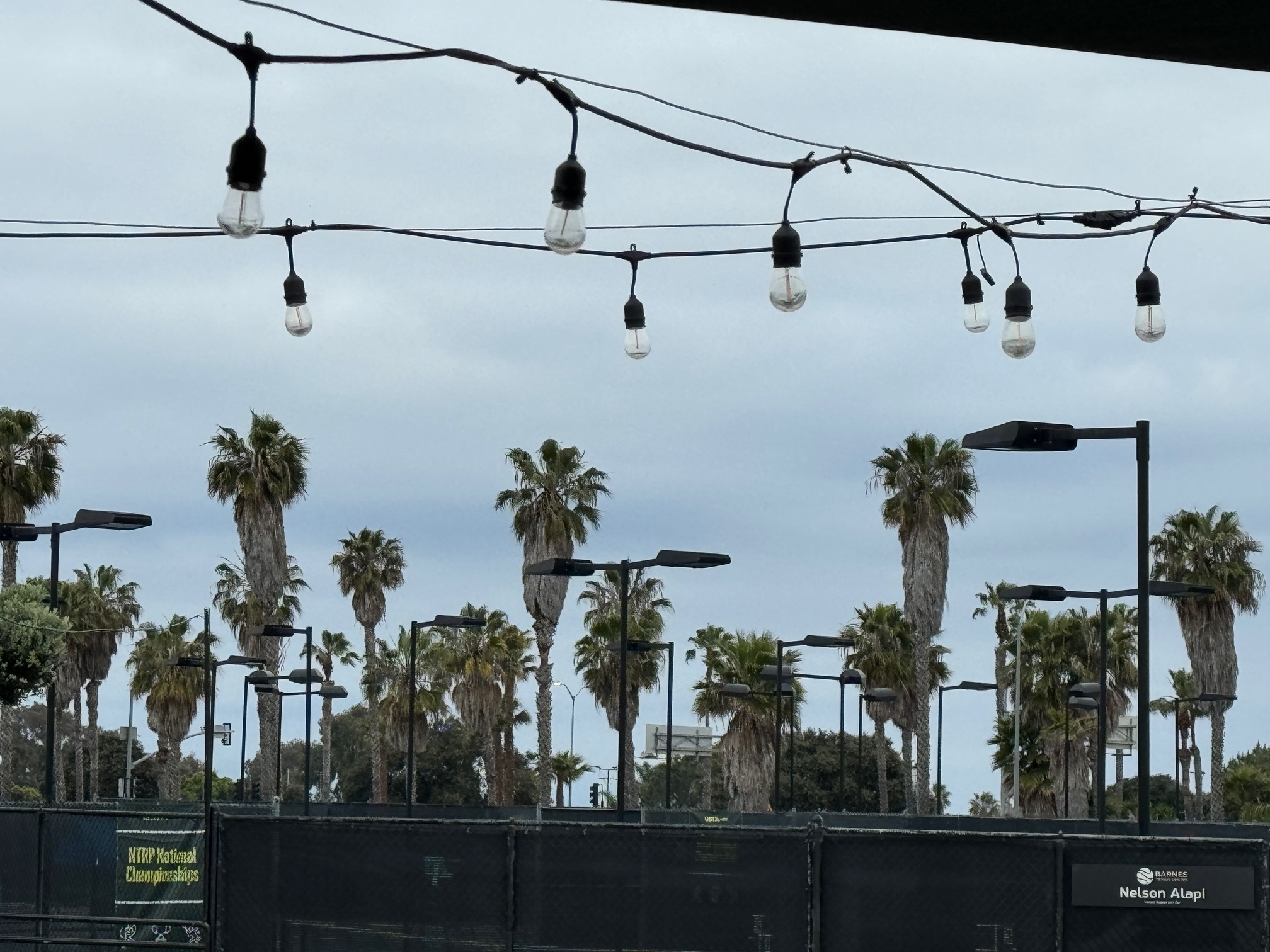This weekend, we are resuming the long and sordid saga that culminated with two players receiving substantial suspension points for something that occurred at the Tom Fey Tri-Level National Invitational earlier this year. “Suddenly Suspension Points” provided an overview of the incident, and “Tri-Level Lives in a Gray Area” examined why it doesn’t exactly fall under USTA League play. Today, we are taking a look at how Tri-Level doesn’t quite fit under tournaments, either. It is a scintillating examination of how the USTA sanctions (and does not sanction) official play.
The USTA “Friend at Court” introduces the concept of sanctioning in USTA Regulation XVII.A.1.
Meaning of sanctioning. The USTA sanctioning process is intended to aid the public, the player, and the tennis promoter. It helps to assure uniformity of the rules of play; it permits the ranking of players on a basis of an accepted standard; it encourages an orderly schedule of tournaments that accommodates the reasonable needs of players, promoters, and sponsors; and it fosters the aim of providing the public with tennis of high caliber and ethical standards.
USTA Friend at Court, Regulation XVII.A.1
I don’t think that is a particularly user-friendly definition. Then again, that isn’t exactly the target audience of the USTA regulations. A more accessible description appears on the USTA Adult Tournaments Informational page.
A sanctioned tournament is a tournament that has been approved by the appropriate level of the USTA (district, section, national) and agrees to abide by all USTA rules and regulations. Non-sanctioned tournaments are not used for ranking and do not have to follow USTA rules and regulations.
Excerpt from the USTA Adult Tournaments Informational Page, viewed April 9, 2024
In contrast, USTA League does not undergo the same sanctioning process as tournaments. That is explicitly stated both in the USTA League Regulations and the “Friend at Court.”
The USTA League is approved by USTA without necessity of a sanction application (See FRIEND AT COURT XVII B)
2024 USTA League National Regulations, Excerpt of Regulation 1.04A, USTA League Program
USTA League and USTA Junior Team Tennis are hereby approved by the USTA without any sanction application.
USTA Friend at Court XVII B
As we discussed yesterday, the Tom Fey Tri-Level National Invitational tournament is not defined as an official USTA League format. Based on the response to an inquiry I sent to the event organizers, I do not believe it applied for or received an official tournament sanction either. That is not necessarily a problem. However, it illustrates the gray space that National Invitational Events occupy.
The definition of sanctioned events from the USTA Adult Tournaments informational page quoted earlier in this post ends with the sentence, “Non-sanctioned tournaments are not used for ranking and do not have to follow USTA rules and regulations.” However , there is nothing that prevents them from doing so — to a certain extent.
I believe most unsanctioned tournaments slavishly follow the first two parts of the USTA “Friend at Court.” Without compliance with the ITF Rules of Tennis (Part 1) and “The Code” (Part 2), you’re simply not playing the sport as intended. In my experience, unsanctioned tournaments universally follow the first two parts of USTA Friend at Court, even though they are not compelled to do so.
Additionally, there is absolutely nothing that would prevent an unsanctioned tournament from structuring its organization and practices in compliance with USTA Regulations. However, that stops at the places where data and information would ordinarily flow up to the USTA. For example, players do not receive ranking points for participation in unsanctioned tournaments. Furthermore, those matches do not impact NTRP ratings. I also do not think a player can be assessed USTA suspension points at unsanctioned tournaments.
While USTA League is explicitly exempt from “the necessity of a sanction application,” that only applies to the formats defined expressly within the USTA League Regulations. The Tom Fey Tri-Level National Invitational tournament isn’t part of the USTA League. So why do those matches count for NTRP ratings, and why are suspension points even possible at that event?
Tomorrow, we delve into the history of the Tom Fey Tri-Level National Invitational tournament in an attempt to understand it.
- 2024 USTA League National Regulations, USTA Resource Document, March 14, 2024.
- USTA Tri-Level National Invitational Welcome Page, USTA SoCal Hosted Informational Page, last viewed April 6, 2024.
- Friend at Court: The Handbook of Tennis Rules and Regulations, USTA, 2024
- USTA Adult and Family Tournament, Ranking, & Sanctioning Regulations, USTA Regulation, as amended December 14, 2023.
- USTA League Suspension Point System Calculation Tables, USTA Resource Document, February 6, 2024.
- USTA League Suspension Point System 2024, USTA Resource Document, February 6, 2024.
- USTA League Suspension Point System Frequently Asked Questions, USTA Resource Document, March 23, 2023.



